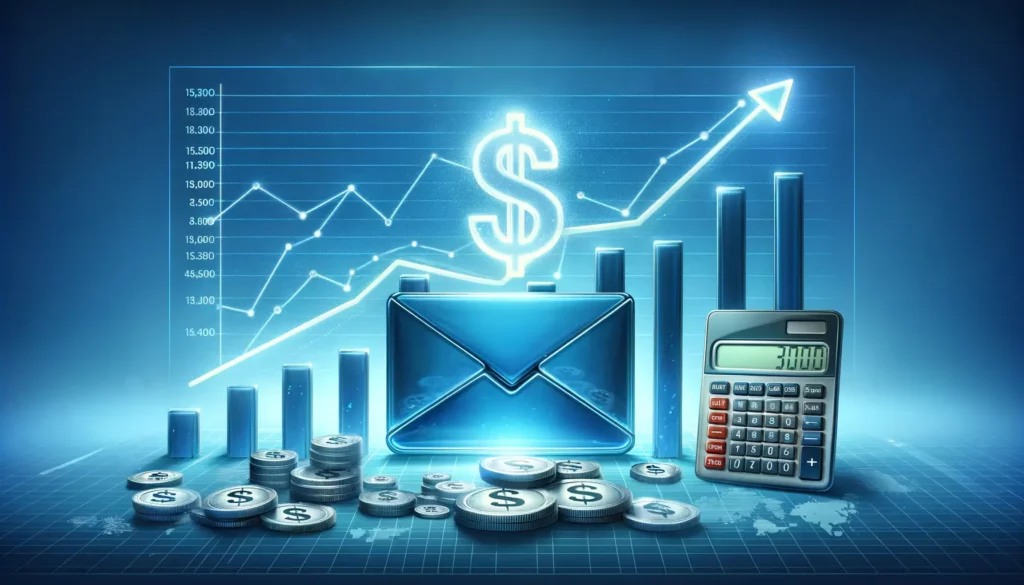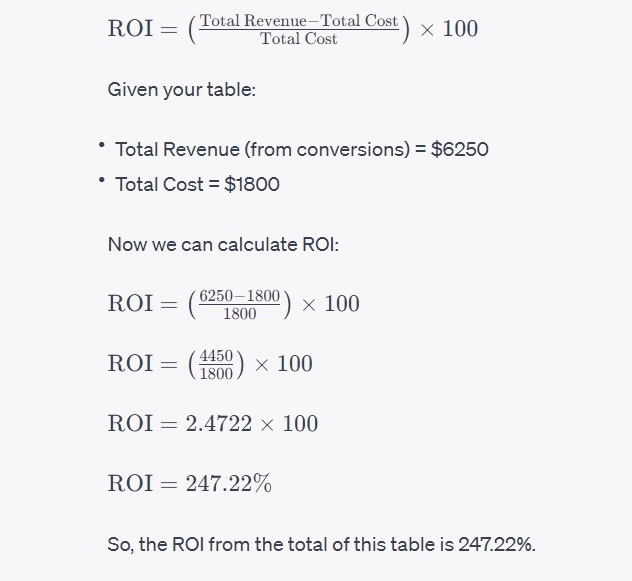Calculating the ROI: Lead Generation through Email Marketing

In the ever-evolving landscape of digital marketing, the golden thread that ties success to effort is the ability to measure Return on Investment (ROI). While the concept of ROI is universal across different marketing channels, email marketing for lead generation presents unique challenges and opportunities in its calculation. Today, we delve deep into the comprehensive method of evaluating ROI, specifically within the realm of email marketing lead generation and conversions.
Understanding the Foundations of ROI in Email Marketing
Before we leap into calculations and metrics, it’s crucial to grasp the underlying principles that define the ROI of email marketing campaigns. The simple formula looks like this:
ROI=(Revenue from Email Leads−Investment on Email CampaignsInvestment on Email Campaigns)×100ROI=(Investment on Email CampaignsRevenue from Email Leads−Investment on Email Campaigns)×100
Yet, there’s a nuanced narrative behind each component of this equation, particularly when we examine the costs associated with lead generation and the revenue generated from conversions.
The Costs: Investing in Quality Leads
- Email List Acquisition: Whether you build an email list organically or purchase one, the quality of your leads is paramount. High-quality email lists often require a more significant investment but can result in a better ROI due to higher engagement rates.
- Lead Scoring Systems: Implementing lead scoring helps prioritize leads likely to convert. Though there’s an initial setup cost, the increase in conversion rates can significantly enhance ROI.
- Marketing Automation: The cost of email marketing software is an investment that must be accounted for. Automating your email campaigns can reduce long-term costs and improve efficiency.
The Returns: Monetizing the Conversions
- Conversion Rates: This is the percentage of email recipients who take the desired action. A comprehensive understanding of conversion rates can illuminate the direct impact of your email campaigns on revenue.
- Average Deal Size: Knowing the average revenue earned from each conversion helps attribute tangible value to your email marketing efforts.
Factors Influencing ROI Calculation
When calculating ROI, several factors can tip the scales, including:
- Email List Quality: A well-segmented and maintained email list directly correlates with higher engagement and conversion rates.
- Segmentation: Tailoring your campaign to address the specific needs and interests of different segments can dramatically increase conversions.
- Conversion Rates: They’re the litmus test of your email’s effectiveness. Even a small increase can significantly impact the overall ROI.
- Average Deal Size: Higher transaction values can offset lower conversion rates, affecting the ROI positively.
Email Marketing Lead Generation Best Practices
To set the stage for a positive ROI, it’s essential to follow best practices in using email marketing strategies for effective lead generation:
- Personalized Email Content: Use generative AI to customize each message, which can lead to 3-5x better results than non-personalized approaches.
- Engaging Email Subject Lines: The first point of engagement is the subject line. It needs to capture attention and provoke curiosity.
- Responsive Email Templates: Ensuring your emails look great on any device is non-negotiable in today’s mobile-first world.
- Continuous A/B Testing: Test different aspects of your email campaigns to optimize for the best performance.
- Valuable Lead Magnets: Provide something of value in exchange for an email address to improve the quality of your leads.
The Silent ROI Boosters: List Segmentation and Lead Scoring
It’s the silent factors like list segmentation and lead scoring that often yield the most significant ROI improvements. Segmenting your email list allows for more targeted and relevant communications, which can lead to higher engagement rates. Similarly, a robust lead scoring model ensures that your sales team focuses their efforts on leads that are most likely to convert, thereby increasing the efficiency of your sales funnel.
The Data Speaks: Email Marketing ROI Statistics
As per the insights from Luisa Zhou’s article on email marketing ROI, email marketing is a standout performer in the digital marketing arena. With an average ROI of $36 for every $1 spent, it’s a channel that warrants attention. Here’s a glimpse into some compelling statistics:
- Average ROI Across Industries: $36 for every $1 spent
- Highest ROI in Retail/E-commerce: 45:1
- Market Value for Email Marketing Software (2020): $7.5 billion
- Projected Market Value (2027): $17.9 billion
These figures underscore the importance of email marketing in the contemporary business ecosystem. They also highlight the potential for email marketing to evolve as consumer behaviors and technologies change.
The Role of Automation and AI in Enhancing ROI
Automation and AI have transformed email marketing from a manual, time-intensive task to a sophisticated, results-driven strategy. Platforms like Wavo harness AI to personalize communication at scale, which is a significant departure from the ‘one-size-fits-all’ approach. By automating not only the distribution of emails but also the personalization of content, businesses can experience a dramatic uptick in engagement and conversions.
Leveraging Email Automation for Higher ROI
In the world of email lead generation campaigns, automation is the linchpin that can scale your efforts and measure the nuances of ROI with precision. Here’s how it streamlines the process:
- Automated Follow-ups: Ensuring that no lead falls through the cracks, automation can significantly increase conversion rates by sending timely and relevant follow-up messages.
- Behavior-triggered Emails: Automation enables the sending of emails based on user behavior, like website visits or previous email interactions, which can lead to higher conversion rates.
- Segmentation and Personalization: By automating the segmentation of your email list, you can deliver more relevant, personalized content, which is proven to improve ROI.
- Analytics and Reporting: With automation tools, you gain access to detailed analytics that can help refine your approach and improve ROI over time.
Quantifying the Impact of Email Lead Generation Strategies
Calculating the ROI of your email marketing efforts goes beyond basic mathematics; it’s about understanding and quantifying the impact of each strategy employed. For instance, how does the introduction of an automated email series compare to single, one-off campaigns? How does personalization affect the open and click-through rates, and subsequently, the conversion rates? These nuances must be measured and accounted for to truly grasp the ROI of your email marketing campaign.
The Multidimensional ROI of Email Lead Generation
ROI in email marketing is not just a single figure; it’s a multidimensional concept that reflects several aspects of your business growth:
- Customer Lifetime Value (CLV): ROI should consider the long-term value of each lead, not just the immediate conversion.
- Brand Awareness: Email campaigns can enhance brand recognition, which, although not directly quantifiable in revenue, contributes to long-term profitability.
- Customer Retention: Engaging content can improve customer loyalty, leading to repeat purchases and referrals.
Measuring the Immeasurables
Some benefits of email marketing are harder to quantify but no less important:
- Educating Prospects: Providing valuable content positions your brand as an industry leader and builds trust with your audience.
- Market Intelligence: Interaction with emails can yield insights into consumer behavior, which is invaluable for shaping future strategies.
- Networking Opportunities: Email can open doors to partnerships, collaborations, and other business growth opportunities that traditional ROI calculations may not capture.
Optimizing Your Email Marketing Campaigns for Better ROI
To maximize ROI, it’s not just about running campaigns; it’s about continuous optimization:
- A/B Testing: Regular testing of email subject lines, content, and calls-to-action can yield incremental improvements that have a substantial cumulative effect on ROI.
- List Hygiene: Regularly cleaning your email list to remove unengaged subscribers can improve deliverability and engagement metrics.
- Segmentation: Creating segments based on user behavior and preferences allows for more targeted and effective campaigns.
- Responsive Design: With the increasing use of mobile devices to read emails, ensuring your design is mobile-friendly is non-negotiable.
The Economics of Email Lead Generation
Let’s talk numbers. Consider the following hypothetical data table to illustrate the ROI calculation for a successful email marketing campaign:
| Investment | Cost |
|---|---|
| Email List Purchase | $500 |
| Email Software | $300/month |
| Content Creation | $1000 |
| Total | $1800 |
| Revenue | Amount |
|---|---|
| Leads Generated | 250 |
| Conversion Rate | 5% |
| Average Deal Size | $500 |
| Total Revenue (from conversions) | $6250 |
Using our initial formula, the ROI for this campaign would be:

This simplified model shows a clear positive return, but remember, this is a snapshot. For sustained growth, you must consider long-term and qualitative benefits as well.
Concluding Thoughts: Is Email Marketing Lead Generation Worth It?
Reflecting on the strategic importance of email marketing in the modern sales process, the evidence points to a resounding yes. With an average ROI that significantly outperforms other digital channels, and with the potential for personalization and automation, email marketing remains a highly efficient way to generate leads and drive conversions.
Leveraging sophisticated software like Wavo can amplify these efforts, enabling businesses to reach and exceed their sales and marketing goals. The combination of strategic segmentation, AI-driven personalization, and detailed analytics positions email marketing not just as a tactic, but as a pivotal component of a comprehensive lead generation strategy.